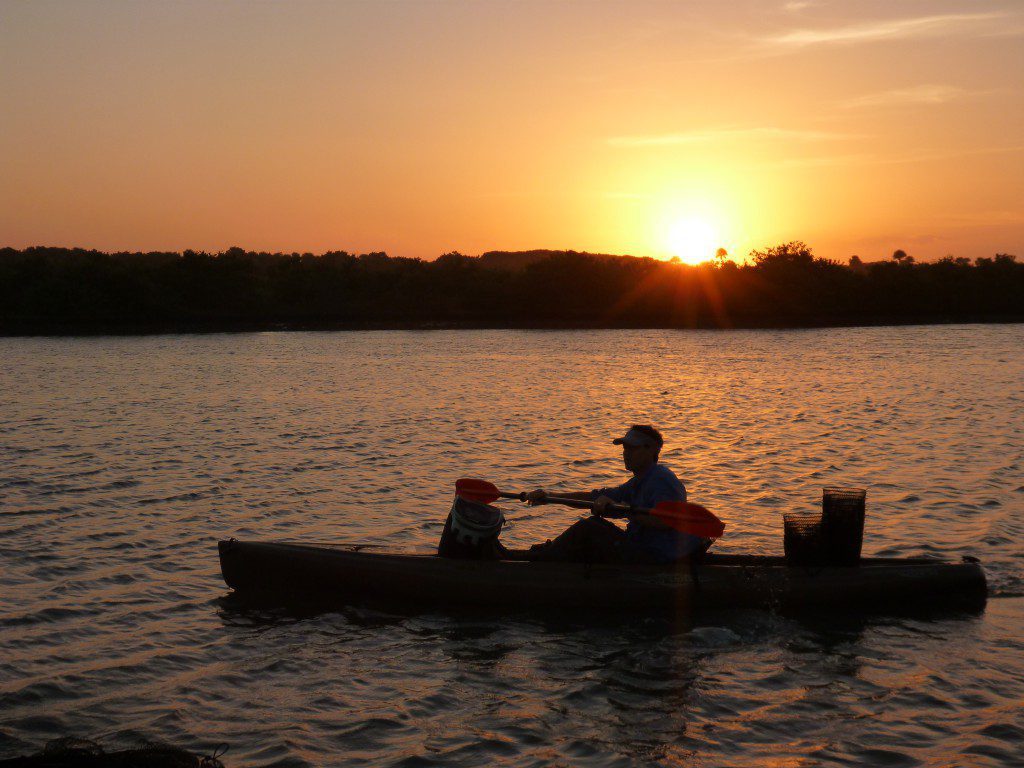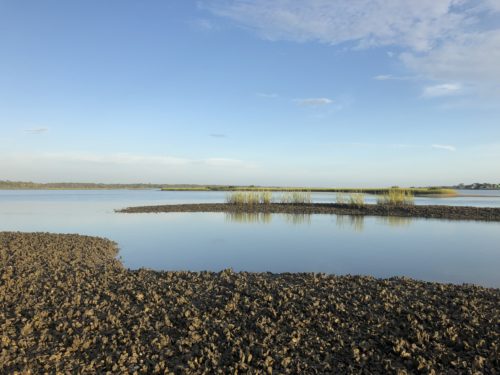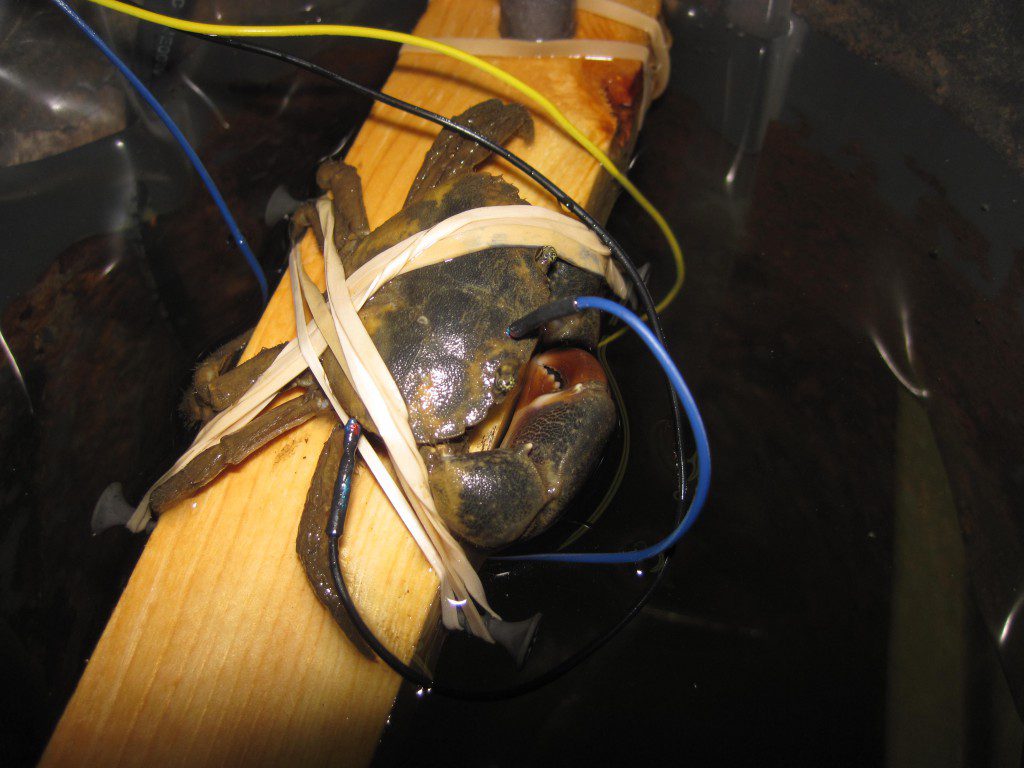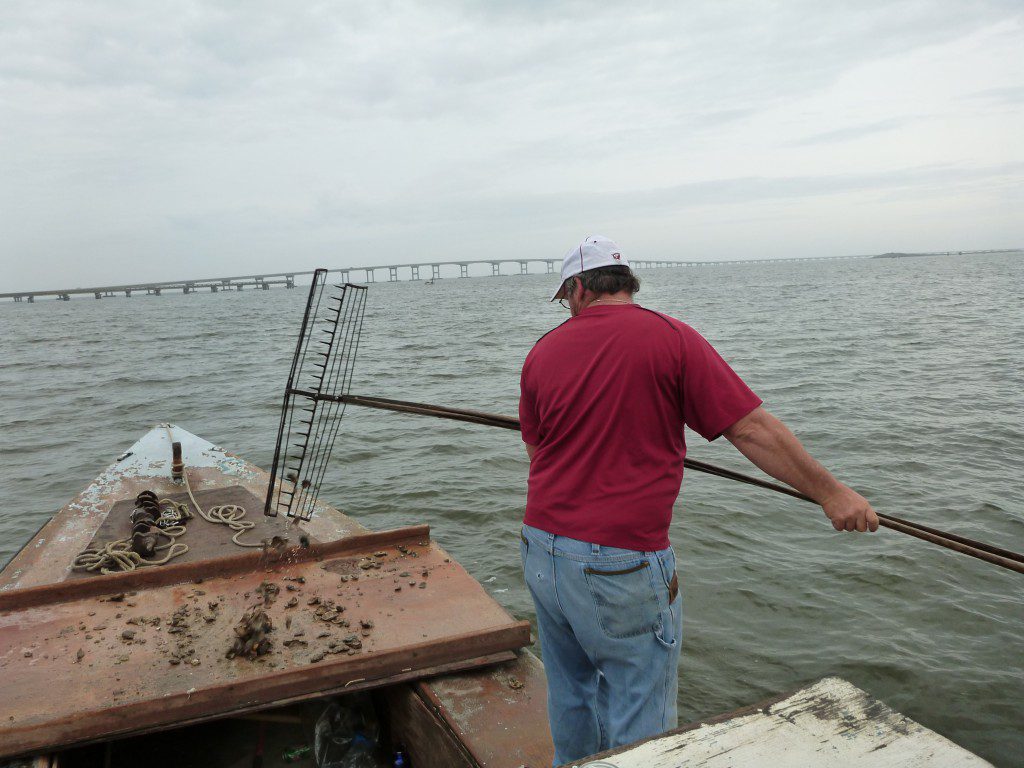A guest post as featured in the blog In the Grass, On the Reef, by David Kimbro, assistant professor in Marine and Environmental Sciences
Hanna Garland shows how the Hughes/ Kimbro Lab adapted their techniques for underwater research in Apalachicola Bay. She talked about their difficulties with the weather, and as you can see in the video above, it was difficult for their oysterman collaborator (as it is for Apalachicola oystermen these days) to find enough healthy adult oysters to run the experiment. Below, David Kimbro looks back at the big Biogeographic Oyster study and what it has taught them about how oyster reefs work, and how they’ve been able to take that knowledge and apply it to the oyster fishery crisis.
Dr. David Kimbro FSU Coastal & Marine Lab
Does our study of fear matter for problems like the Apalachicola Bay oyster fishery crash? Absolutely.
Bear with me for a few sentences…
I like to cook. My first real attempt was a chicken piccata and it was a disaster. After ripping off the recipe from my brother (good cook), I quickly realized that the complexity of the recipe was beyond me. To save time and fuss, I rationalized that the ordering of ingredients etc. didn’t matter because it was all going into the same dish. Well, my chicken piccata stunk and I definitely didn’t impress my dinner date.

Way back in 2010, David paddles to one of the St. Augustine sites used in the lab’s first tile experiment. Since then they have done two spat tile experiments and two cage experiments ranging from Florida to North Carolina.
Around this same time… long, long ago, a bunch of friends and I were also working on a basic science recipe for understanding how oyster reefs work and it only contained a few ingredients: predatory fish frighten crabs and this fear protects oysters….a beautiful trophic cascade! But years later, we figured the recipe was too simple. So, we overhauled the recipe with many more ingredients and set about to test it from North Carolina to Florida with the scientific method.
Now that we finally digested a lot of data from our very big experiment (a.k.a. Cage Experiment 1.0), I can confidently say that the fear of being eaten does some crazy things to oyster reefs. And even though most of the ingredients were the same, those crazy things differed from NC to Florida. While our final recipe isn’t perfect, we now have a better understanding of oyster reefs and that the recipe definitely has many more ingredients.
For instance,
- The fear of being eaten has a sound component to it. Previously, we thought fear was transmitted only chemically, but now we know that crabs can hear. This is huge!
- Oyster filtration and oyster pooping can affect the amount of excess nutrients in our coastal environment. Our collaborator (M. Piehler, UNC-CH) showed that in some places, this can remove excess nutrients and that this services makes an acre of oyster reef worth 3,000 every year in terms of how much it would cost a waste water treatment facility to do the same job.
- In a few months, I hope to update you on how sharks, catfish, drum, and blue crabs fit into the recipe.
In addition to uncovering some new ingredients, our pursuit of this basic science matters because it allowed us to figure out what methods and experiments work as well as what things don’t (Watch how they reinvented one of their most depended upon tools: The spat tile experiment). In short, the fruits of this basic science project can now be shunted into applied science and the development ofinterventions to improve the Apalachicola Bay oyster fishery.
But given that the lack of oyster shell in the bay is clearly the problem and that re-shelling the bay would bring the oysters back, why do we need to conduct the research? Well, then again it could be the lack of fresh water coming down the Apalachicola River and/or the lack of nutrients that come with that fresh water. Oh, don’t forget about the conchs that are eating away at oyster reefs in St. Augustine, Florida and may be doing the same to those in Apalachicola.
Like the chicken piccata recipe, Apalachicola Bay is awesome, but it’s complicated. Clearly, there are lots of things that could be in play. But if we don’t understand how they are all linked, then we may waste a lot of effort because fixing the most important part with Ingredient A may not work without simultaneously fixing another part with Ingredient B. Even worse, maybe Ingredient B must come first! Only through detailed monitoring and experiments will we figure out how all of the ingredients fit together.
Luckily, my brother shared the fruits of his basic culinary experiments so that I could quickly solve my applied problem: cooking a good dinner for the second date. Similarly, it’s great that we received funding from NSF to conduct our biogeographic oyster study, because now we can quickly apply the same methods and personnel to help figure out what’s ailing the Apalachicola Bay oyster fishery. Basic and Applied science, Yin and Yang.
–David
In the Grass, On the Reef is funded by a grant from the National Science Foundation.



